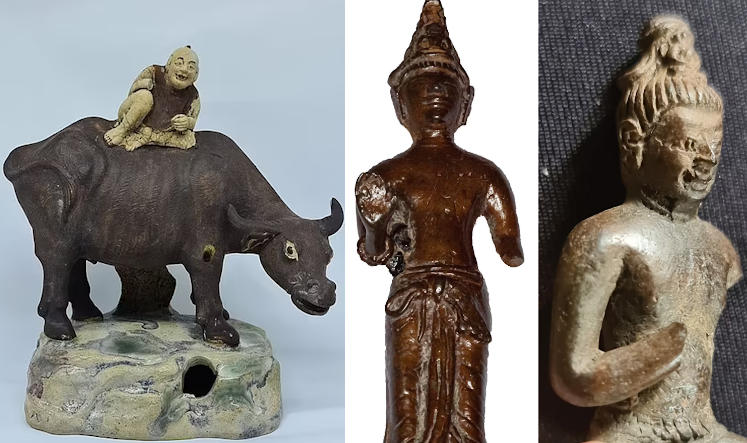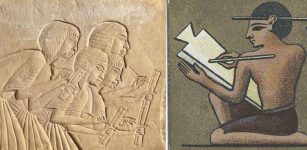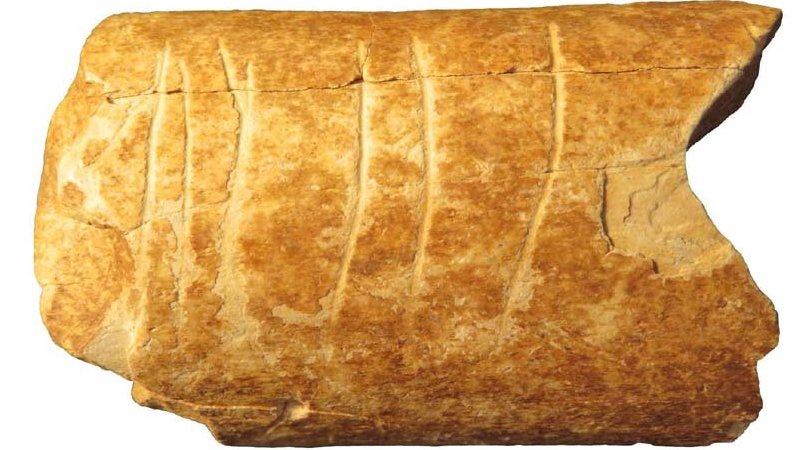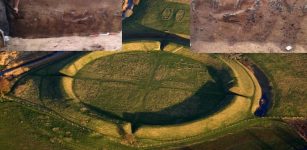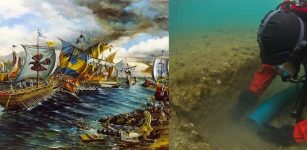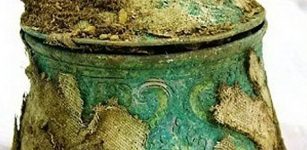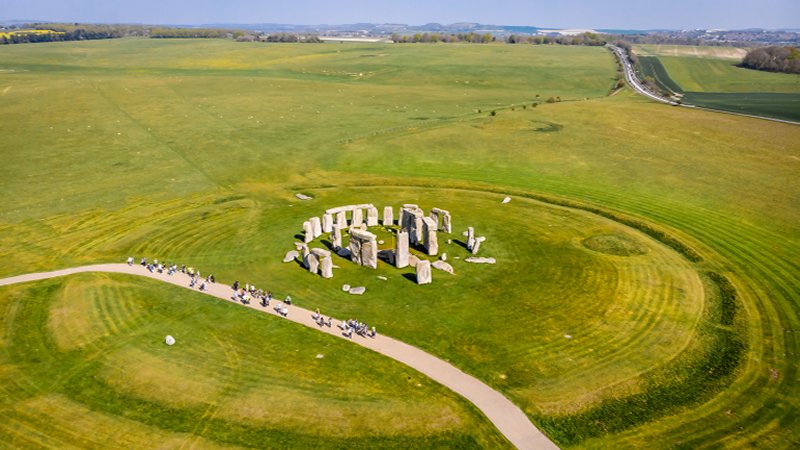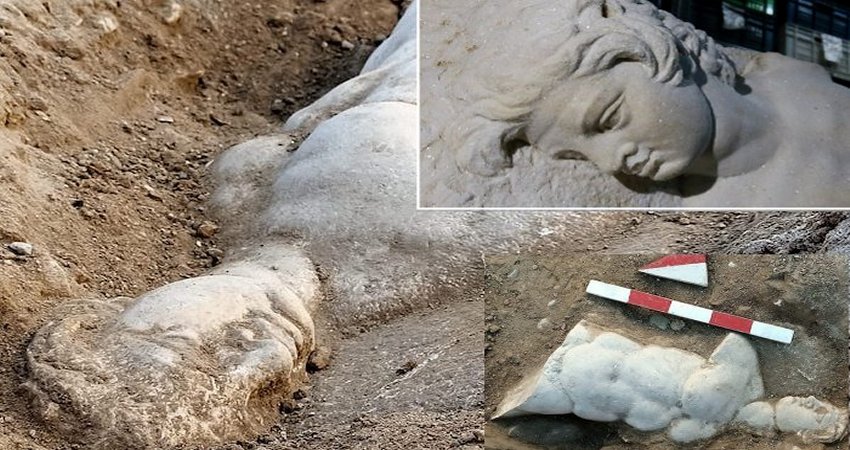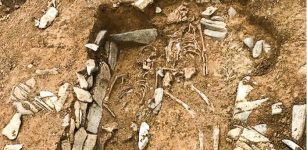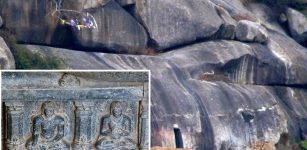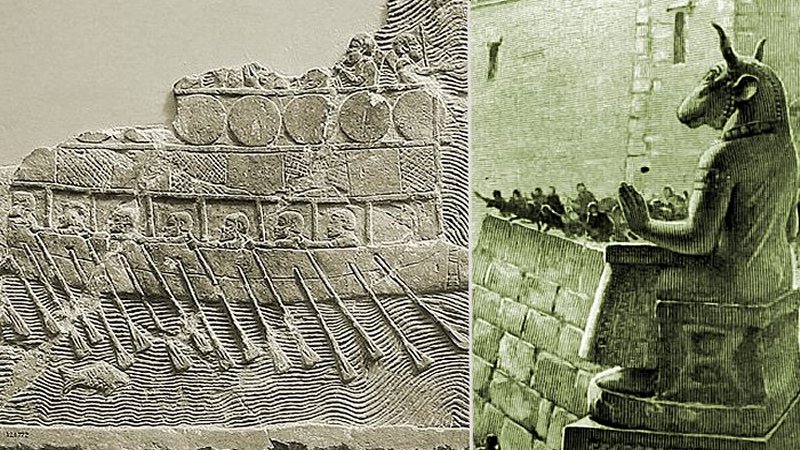Legendary Lost Island Of Gold Of The Mysteriously Vanished Srivijaya Civilization Found Underwater
Conny Waters – MessageToEagle.com – Magnificent ancient treasures discovered by local fishermen in Indonesia‘s Musi River may be the beginning of a great archaeological and historical story.
The artifacts date back to the Srivijaya civilization, a powerful kingdom between the 7th and 13th centuries which mysteriously vanished a century later. Scientists now suggest the artifacts found at the site offer evidence of the legendary Indonesian kingdom renowned for its golden treasures known as the Island of Gold.
Credit: Wreckwatch Magazine
The startling artifacts include marvelous gemstones, gold ceremonial rings, coins, bronze monks’ bells as well as jewel-encrusted life-size statue of Buddha from the 8th century. There is reason to believe these ancient objects belonged to the vanished Srivijaya civilization.
“In the last five years, extraordinary stuff has been coming up,” said Dr. Sean Kingsley, a British maritime archaeologist. “Coins of all periods, gold and Buddhist statues, gems, all the kinds of things that you might read about in Sinbad the Sailor and think it was made up. It’s actually real.”
According to Dr. Sean Kingsley Srivijaya was a “Waterworld”, its people living on the river like modern boat people, just as ancient texts record: “When the civilization ended, their wooden houses, palaces, and temples all sank along with all their goods.”
Many skilled underwater archaeologists and great explorers have looked for Srivijaya as far afield as Thailand and India, but all have failed. “Even at Palembang, the traditional location of the vanished kingdom, archaeologists failed to turn up enough pottery to boast even a small village. Srivijaya, the last mighty lost kingdom on earth, has jealously guarded its secrets,” Dr. Kingsley said.
Credit: Wreckwatch Magazine
With the discovery made by local fishermen, everything may have changed now, and scientists can open a new chapter in the history of Indonesia.
Dr. Kingley’s research on the subject has been published in the autumn issue of Wreckwatch magazine, which he also edits.
He wrote: “From the shallows have surfaced glittering gold and jewels befitting this richest of kingdoms – everything from tools of trade and weapons of war to relics of religion.
From the lost temples and places of worship have appeared bronze and gold Buddhist figurines, bronze temple door-knockers bearing the demonic face of Kala, in Hindu legend the mythical head of Rahu who churned the oceans to make an elixir of immortality.
Bronze monks’ bells and gold ceremonial rings are studded with rubies and adorned with four-pronged golden vajra sceptres, the Hindu symbol for the thunderbolt, the deity’s weapon of choice.
Credit: Wreckwatch Magazine
Exquisite gold sword handles would have graced the sides of royal courtesans, while bronze mirrors and hundreds of gold rings, many stamped with enigmatic letters, figures and symbols, earrings and gold necklace beads resurrect the splendour of a merchant aristocracy going about its daily dealings, stamping shipping manifests, in the palace complex.”
See also: More Archaeology News
“For over 300 years the rulers of Srivijaya mastered the trade routes between the Middle East and imperial China,” the archaeologist remarked. “Srivijaya became the international crossroads for the finest produce of the age. Its rulers accumulated legendary wealth.”
The Srivijaya kingdom was very protectives of its magnificent treasure and guarded the valuable objects closely.
The reason for the collapse of the Srivijaya kingdom is unknown, but Dr. Kingley suggests the Empire was buried by Indonesia’s erupting volcanoes and met a similar fate like Pompeii.
The underwater artifacts must be examined and hopefully, they can shed light on the Srivijaya kingdom and its disappearance.
Written by Conny Waters – MessageToEagle.com – AncientPages.com Staff Writer



